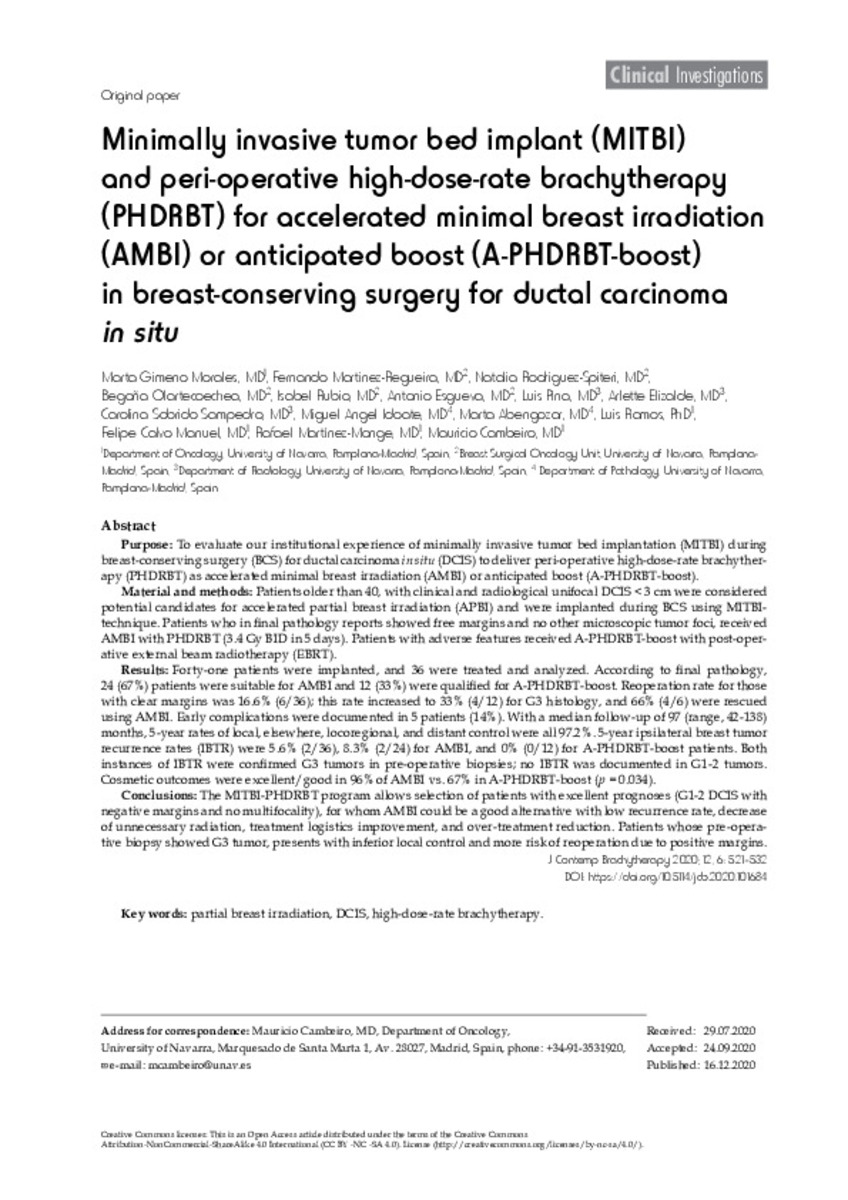Minimally invasive tumor bed implant (MITBI) and peri-operative high-dose-rate brachytherapy (PHDRBT) for accelerated minimal breast irradiation (AMBI) or anticipated boost (A-PHDRBT-boost) in breast-conserving surgery for ductal carcinoma in situ
Keywords:
Partial breast irradiation
DCIS
High-dose-rate brachytherapy
Note:
This is an Open Access article distributed under the terms of the Creative Commons
Attribution-NonCommercial-ShareAlike 4.0 International (CC BY -NC -SA 4.0). License (http://creativecommons.org/licenses/by-nc-sa/4.0/).
Citation:
Gimeno-Morales, M. (Marta); Martinez-Regueira, F. (Fernando); Rodriguez-Spiteri, N. (Natalia); et al. "Minimally invasive tumor bed implant (MITBI) and peri-operative high-dose-rate brachytherapy (PHDRBT) for accelerated minimal breast irradiation (AMBI) or anticipated boost (A-PHDRBT-boost) in breast-conserving surgery for ductal carcinoma in situ". Journal of Contemporary Brachytherapy. 12 (6), 2020, 521 - 532
Statistics and impact
0 citas en

0 citas en

Items in Dadun are protected by copyright, with all rights reserved, unless otherwise indicated.







